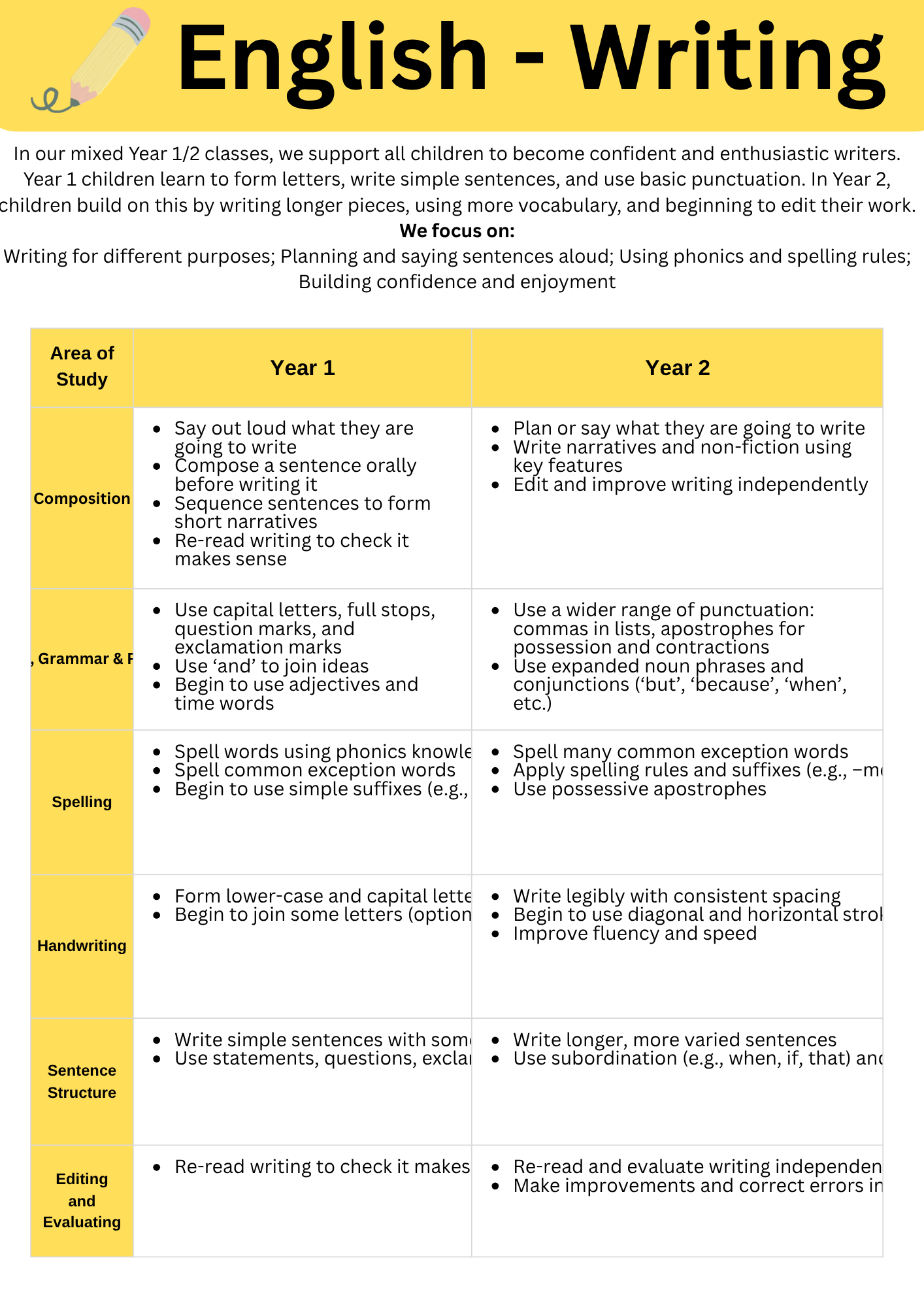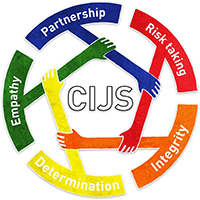Writing
EYFS
In EYFS, developing the children’s motor skills is a key element to starting their writing progression. The children take part in activities such as dough disco to build their strength and support pencil control. The confidence to write is developed through a nurturing approach, which builds children’s self-esteem as writers. We develop a love of writing by giving children a clear audience and purpose for their writing, which enables them to think like an author.
The progression document shows the learning journey that children will make in EYFS, from initial mark making to writing clear and coherent sentences, this can be found at the bottom of this page.
KS1
At Chellaston Infants School, we follow the Literacy Tree curriculum for writing. It is a complete, book-based platform for primary schools that covers all requirements of the Primary English curriculum.
The books we use to teach writing help children to grow ideas and expand their minds. We have chosen significant and important children’s literature to enrich our curriculum.
Our children are taught progressive skills to write by immersing them in a quality text, where their final writing product has a clear audience and purpose. Throughout the units of work, children have opportunities to create a variety of genres through their writing. This ensures children build their stamina for writing to become articulate authors. Children are exposed to rich and varied vocabulary, which is shared through the use of working walls within classrooms.
Handwriting
At Chellaston Infant School, we believe that high standards of handwriting and presentational skills are essential to success across the curriculum. This policy sets out a systematic programme of teaching handwriting, which enables children to learn how to form letters correctly and to take pride in their work. In order to support pupils in developing their handwriting skills, and to foster values of pride and high aspirations, Chellaston Infant School follows the Martin Harvey Handwriting programme Achieving Excellence in Handwriting. Children use the handwriting skills they have been taught to present work across the curriculum in an attractive way that develops personal pride and a strong sense of achievement.
To support handwriting development pupils will:
- Learn how to develop the correct pencil grip.
- Develop a handwriting style that is consistent in size, orientation and formation.
- Develop a legible and comfortable handwriting style with increasing confidence, fluency and speed.
- Become competent when using a range of writing implements.
- Develop good writing habits and understand the benefits to be gained from working in a clear and tidy area.
- Feel a sense of achievement in completing their work to the best of their abilities.
- Understand that writing is a high priority and valued by their teacher.
- Be motivated by the celebration of their written work in classroom displays.
- Receive high quality teaching of handwriting.
Consistency
At Chellaston Infant School, we use a consistent approach of teaching handwriting throughout the school using Martin Harvey’s guidelines and clear terminology. All members of staff support and believe in the drive for excellence in handwriting. A consistent approach is taken to the handwriting style and the shape of the letters being taught and the language used when teaching handwriting.
Establishing Good Habits
The Martin Harvey method emphasises the importance of establishing good working habits in order to consistently achieve high quality handwriting and excellent presentation of work in every class. We aim to have these habits in place across every class in the school, during every lesson across the curriculum. These include:
Two hands on the paper – Children are encouraged to use two hands when writing: One hand to hold the paper or exercise book and one hand to write with.
Correct posture – Good posture and correct seating position are vital components of developing good handwriting.
In KS1, the four ways in which we ensure the correct seating position are:
- Six feet on the floor – The child’s two feet and the four feet of the chair. Children are discouraged from kneeling on a chair or to sit cross-legged on the chair. The chair’s feet stay on floor so that children do no rock forward or forward on the chair.
- BBC – Children should be expected to sit at tables in the BBC position (Bottom Back in Chair). They pull the chair towards the table, so bottoms are at the back of the chair.
- TNT (Tummy Near Table) – Children are expected to sit with their tummy near the table, but not squashed up to the table. This prevents sitting with the chair a long way from the table so that the children need to slouch forward to do their work.
- Paper Position – When writing, the paper or exercise book should be placed in an upright position. A slight angle is acceptable; however, this should not be more that 45 degrees.



